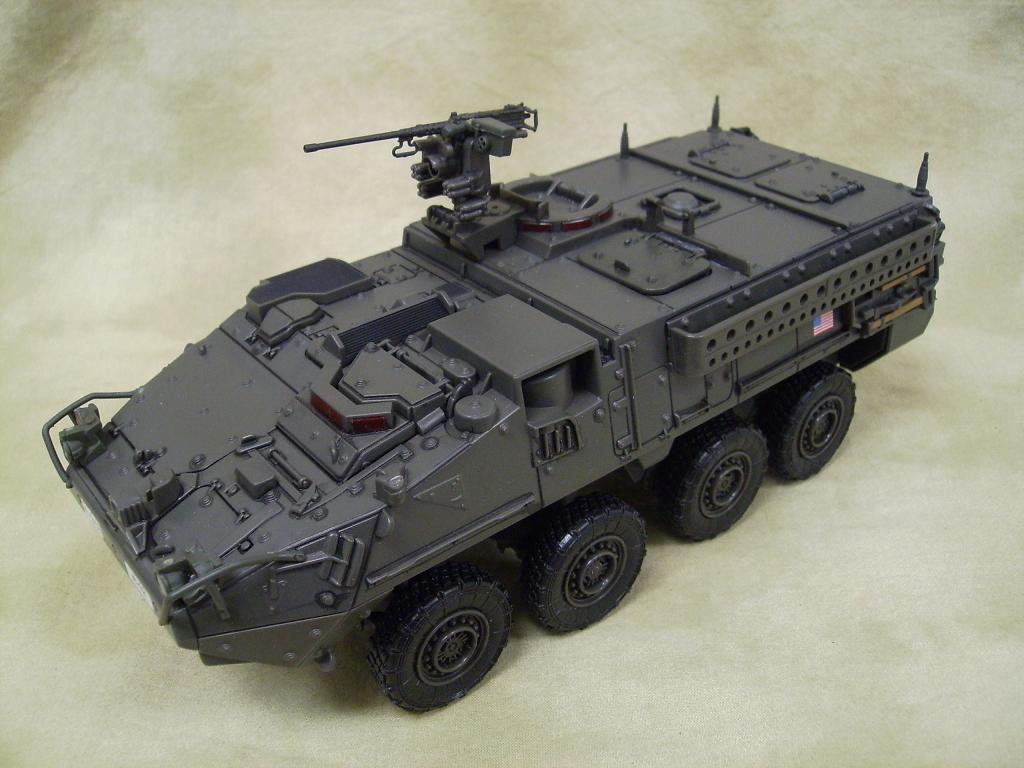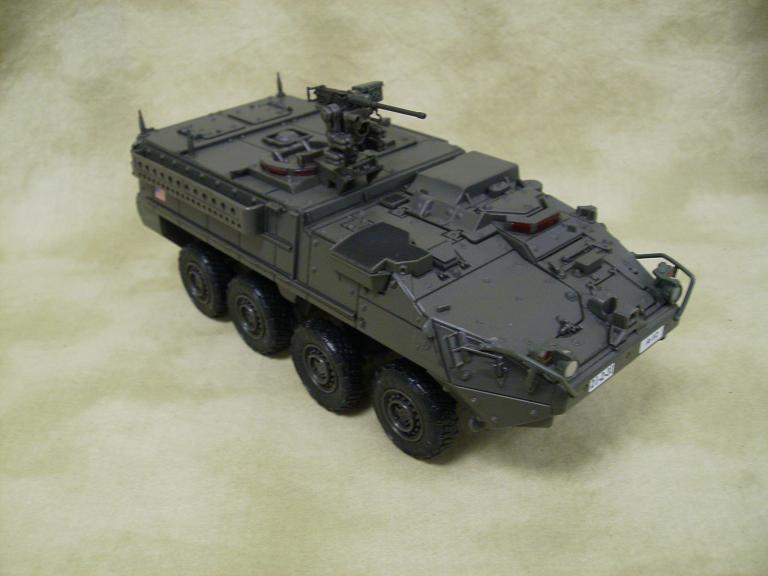Description
Extremely rare and hard to find 1:32 scale M1126 Stryker ICV Infantry Vehicle (Armored Personnel Carrier APC) model. This is the perfect model for desktop/bookcase display. This was a very limited, out of production and almost impossible to find fully assembled model. We are limited to the few we have remaining. While more robust than the typical model assembled from a kit we do not recommend it for those under 14 years old.
Features include:
- Gunner’s and Upper Troop Hatches open/close
- .50 cal elevates/traverses
- Eight wheels freely turn
- Includes one crew figure and additional accessories
- Very detailed exterior
- Measures 9.5″L x 3.5″ H x 4″ W
The Stryker is four-wheel or eight-wheel drive, armored vehicle weighing approximately 19t. The vehicle can attain speeds of 62mph on roads and has a maximum range of 312 miles. The vehicle is named for two American servicemen who posthumously received the Medal of Honor; PFC Stuart S. Stryker, (WWII) and SPC Robert F. Stryker, (Vietnam War).
The basic infantry carrier vehicle (ICV) provides armored protection for the two-man crew and nine man infantry squad. The basic hard steel armor is augmented by applique panels of lightweight ceramic/composite armor. The armor provides integral all-round 14.5mm protection against machine gun rounds, mortar and artillery fragments. Strykers were outfitted in January 2004 with a ‘cage’ of slat armor, providing protection against rocket-propelled grenades (RPGs).
The ICV has a protected remote weapon station with a universal soft mount cradle which mounts either a .50-caliber M2 machine gun, MK19 40mm grenade launcher or MK240 7.62mm machine gun. It is also armed with four M6 smoke grenade launchers.
In August 2005, Kongsberg awarded BAE Systems a contract to supply the TIM1500 640×480 uncooled thermal imaging camera for the remote weapon station. The vehicle’s commander has an FBCB2 (force XXI battle command brigade and below) digital communications system that allows communication between vehicles through text messaging and a map network, as well as with the battalion. The map shows the position of all vehicles on the battlefield and the commander can mark the position of enemy forces on the map which can then be seen by other commanders.


